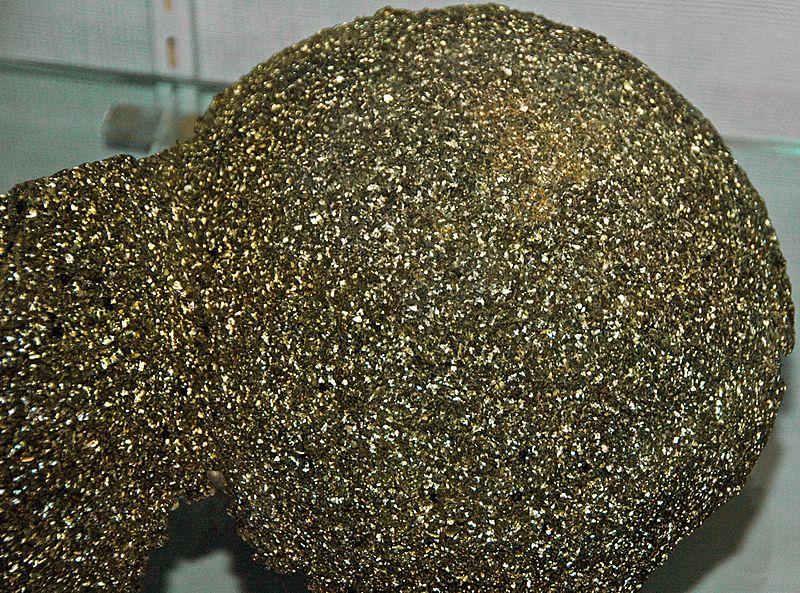Image: Marcasite (Shullsburg, Wisconsin, USA)

Description: Marcasite from Shullsburg, Wisconsin, USA. (public display, Seaman Mineral Museum, Michigan Technological University, Houghton, Michigan, USA) A mineral is a naturally-occurring, solid, inorganic, crystalline substance having a fairly definite chemical composition and having fairly definite physical properties. At its simplest, a mineral is a naturally-occurring solid chemical. Currently, there are over 4900 named and described minerals - about 200 of them are common and about 20 of them are very common. Mineral classification is based on anion chemistry. Major categories of minerals are: elements, sulfides, oxides, halides, carbonates, sulfates, phosphates, and silicates. The sulfide minerals contain one or more sulfide anions (S-2). The sulfides are usually considered together with the arsenide minerals, the sulfarsenide minerals, and the telluride minerals. Many sulfides are economically significant, as they occur commonly in ores. The metals that combine with S-2 are mainly Fe, Cu, Ni, Ag, etc. Most sulfides have a metallic luster, are moderately soft, and are noticeably heavy for their size. These minerals will not form in the presence of free oxygen. Under an oxygen-rich atmosphere, sulfide minerals tend to chemically weather to various oxide and hydroxide minerals. Marcasite is an iron sulfide mineral, FeS2, which is the same chemical formula as pyrite. Different minerals having the same chemical formula are called polymorphs. Other examples of polymorphs are graphite-diamond (both C) and calcite-aragonite (both CaCO3). Pyrite and marcasite both have a metallic luster, a brassy gold color, and a dark gray to black streak. They both lack cleavage, and they have the same hardness (H = 6 to 6.5). Marcasite tends to have a paler brass color than pyrite. Some marcasites are almost silvery-colored. How does one visually distinguish marcasite from pyrite? Apart from color, marcasite crystals are typically plates, or sharp & pointed, and marcasite tends to twin, resulting in cockscomb masses (www.mindat.org/photo-408969.html). Marcasite also more readily breaks down into whitish powder (FeSO4). Pyrite can convert to marcasite naturally, and vice versa. Pyrite concretions may have preserved needle-shaped crystals of marcasite, but the marcasite is gone. X-ray analysis may be needed to determine which polymorph is present. Photo gallery of marcasite: www.mindat.org/gallery.php?min=2571
Title: Marcasite (Shullsburg, Wisconsin, USA)
Credit: Marcasite (Shullsburg, Wisconsin, USA)
Author: James St. John
Usage Terms: Creative Commons Attribution 2.0
License: CC BY 2.0
License Link: http://creativecommons.org/licenses/by/2.0
Attribution Required?: Yes
Image usage
The following page links to this image:

